This Post May Contain Affiliate Links. Please Read Our Disclosure Policy.
For the most beautiful, tender, succulent prime rib, a sous vide prime rib is the way to go. Slow cooked in a temperature-controlled water bath and seasoned with a garlic-herb compound butter, this show-stopping entrée will be gorgeous on your holiday table. Served with a simple, gluten-free au jus made with just 4 ingredients.

What Makes This Recipe So Good
- Prime rib is a classic holiday entrée, and once you taste it, it’s easy to see why. Tender, succulent, melt-in-your-mouth beef that’s labelled “prime” by the USDA due to its gorgeous marbling and age. Whether you’re using a standing rib roast or a rib-eye roast, prime rib is one of the juiciest, most flavorful cuts of meat you’ll find. It’s also toward the high end of the price range for meat, making it more likely to be cooked for holidays or other special occasions than for your average Tuesday night.
- Given the price tag, it’s important to cook prime rib properly, so you aren’t let down by tough, chewy, overcooked meat. The sous vide method cooks the prime rib slowly, in a temperature-controlled water bath that’s guaranteed to cook evenly. After the sous vide, the prime rib is rubbed with a garlic compound butter and roasted for 15 minutes – just long enough to develop a gorgeously deep crust. Roasting it locks in those rich juices and incredible flavors, ensuring every bite is delicious.
Chef’s Tips
- Prime rib shines on its own, so it’s best to keep the seasonings light and simple. That doesn’t mean you can’t customize your blend, though! Any herbs will work, so don’t feel stuck with rosemary. Thyme, sage, oregano, parsley – they’d all be delicious. You could even blend a few herbs together if you want.
- For the very best results, let the prime rib rest for a minimum of 15 minutes after roasting. If you start carving right away, you’ll lose a lot of the natural juices from the meat. Letting it rest, though, gives the juices time redistribute throughout the prime rib, ensuring every bite you take is as moist and tender as possible.
- Speaking of carving, when it’s time to slice the prime rib, make sure you cut against the grain of the meat. Not sure what that means? Look for the muscle fibers running parallel throughout the prime rib. Position your carving knife so it’s perpendicular to those fibers before carving. Cutting against the grain keeps the meat from being chewy and tough.
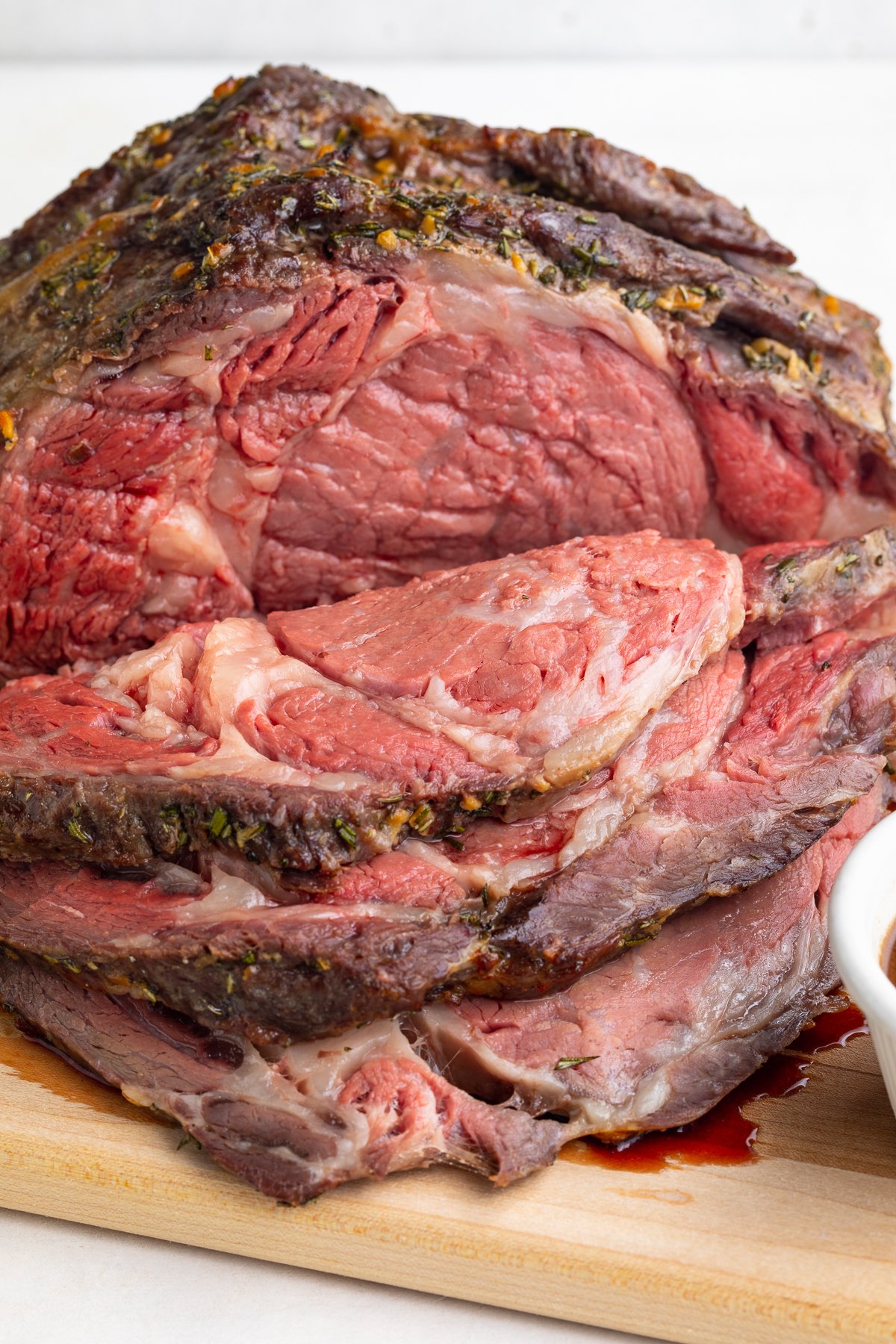
Delicious Sides Ideas For Prime Rib
- Cajun Fries
- Cheesy Roasted Asparagus
- The BEST Parmesan Truffle Fries
- Air Fryer Zucchini Fries
- Sweet Potato Casserole
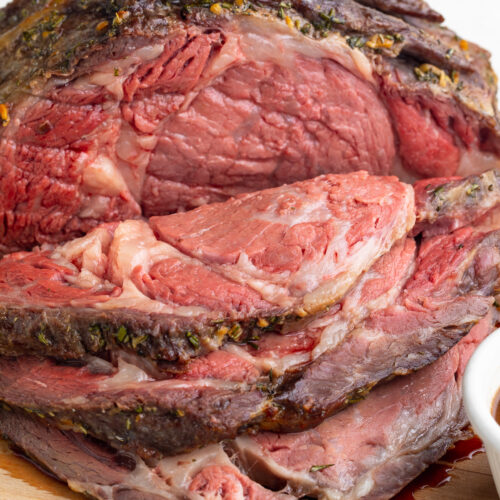
Sous Vide Prime Rib with Au Jus
Equipment
- large baking dish or baking sheet, large enough to hold prime rib
- Aluminum Foil or plastic wrap
- Large pot or other large, heat-resistant container
- Sous vide immersion circulator
- large food-safe vacuum sealing bags or large sealable food-safe plastic bag
- vacuum sealer optional, see Notes for alternative
- Oven
- 2 small bowls
- Silicone spatula or large wooden spoon
- Paper towels
- small skillet
Ingredients
For the Prime Rib
- 1 prime rib roast 3 ½ pounds
- salt to taste
- freshly cracked black pepper to taste
- ¼ cup butter softened
- 2-3 cloves garlic minced
- 1 tablespoon minced fresh rosemary
For the Au Jus
- reserved cooking juices from prime rib
- 1 tablespoon Worcestershire sauce
- ½ cup red wine
- 1 cup beef broth
Instructions
- Place prime rib in baking dish or on baking sheet. Generously season all sides of prime rib with salt, then cover prime rib with aluminum foil or plastic wrap. Place baking dish in refrigerator and chill at least 1 hour, but no more than 12 hours.
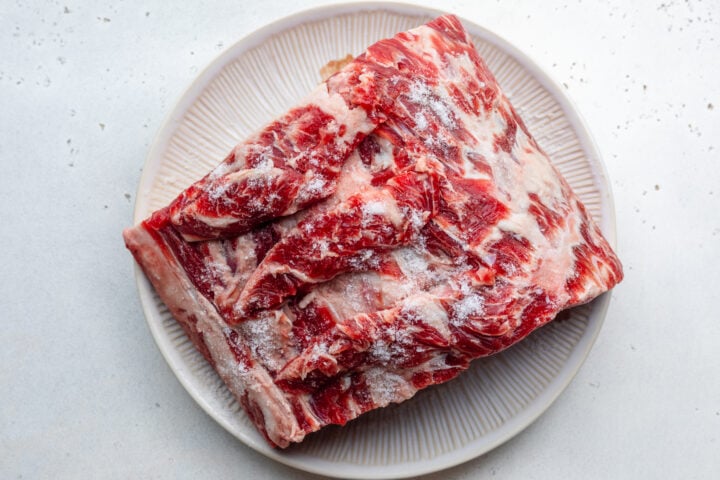
- When ready to cook prime rib, fill large pot or other large, heat-resistant container with water. Insert sous vide immersion circulator and set to 132° Fahrenheit (see Notes for alternate temperatures). Note: pot must be deep enough that water level falls between minimum and maximum indicators on circulator.
- Place prime rib in food-safe bag. Remove as much air from bag as possible with vacuum sealer or water displacement method (see Notes) and seal bag shut.
- Once water bath is preheated to 132° Fahrenheit, place sealed bag in pot, making sure prime rib is fully submerged. Weigh bag down with weights or silverware attached to bottom of bag if needed. Food must be fully submerged to cook properly.
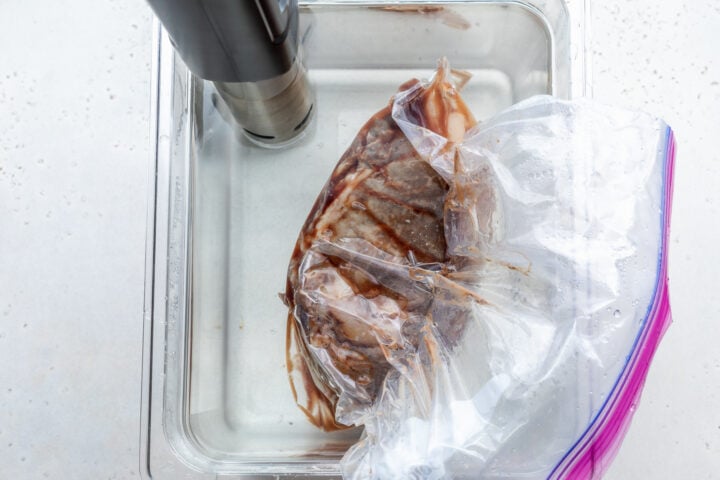
- Cook prime rib in water bath 8 hours. After 8 hours, remove bag from water bath. Transfer prime rib from bag to baking sheet and set aside. Reserve cooking liquid from bag and set aside for au jus.

- Preheat oven to 475° Fahrenheit. Add salt, pepper, softened butter, minced garlic, minced rosemary, salt, and pepper to small bowl. Mix together ingredients until fully combined.
- Pat prime rib completely dry on all sides with paper towels. Once dried, cover prime rib with butter mixture on all sides, gently rubbing mixture into prime rib.

- When entire butter mixture has been applied, place baking sheet in preheated oven. Roast prime rib 10 to 15 minutes or until outside of prime rib is golden brown. When desired coloring is achieved, remove baking sheet from oven and let prime rib rest at least 15 minutes.
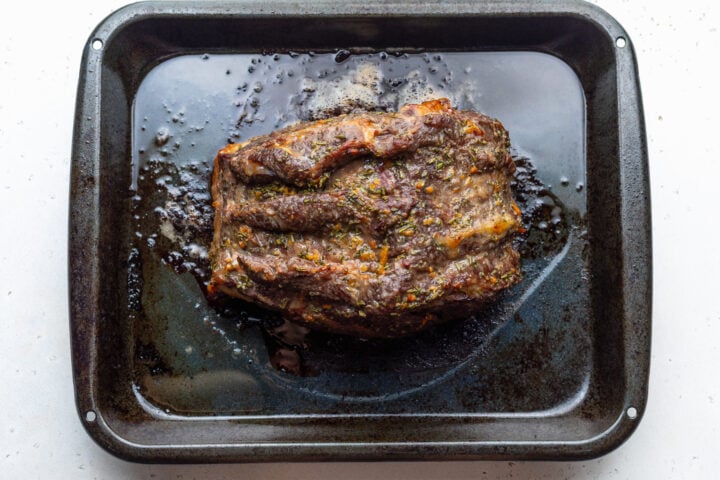
- While prime rib rests, heat small skillet over medium heat. When pan is warm, add reserved prime rib juices, Worcestershire sauce, and red wine. Whisk to blend ingredients, then simmer mixture 4 to 5 minutes or until liquid has reduced by 25%.
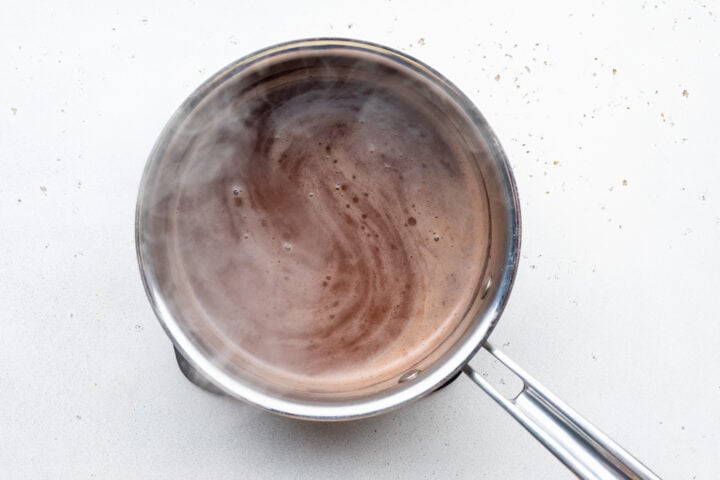
- Pour in beef broth and gently whisk to incorporate. Continue simmering until liquid has reduced to desired consistency, then transfer au jus to serving container.
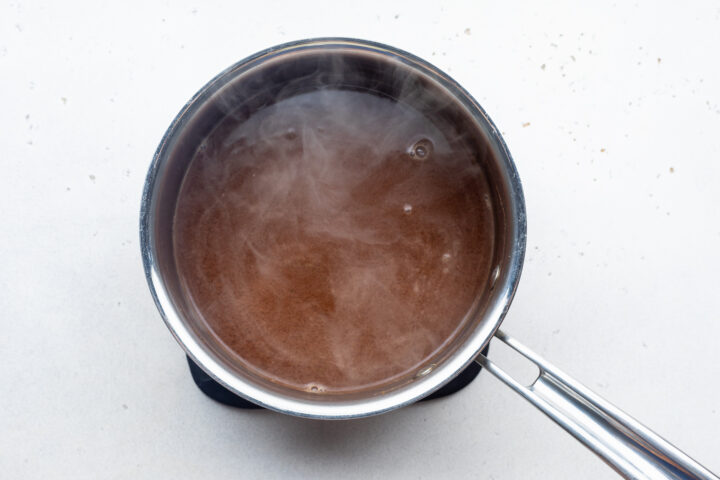
- Carve prime rib into thick slices, working against grain of meat for tender cuts. Serve warm with au jus and desired sides.
- Water Displacement Method: Place the prime rib in an appropriately-sized sealable food-safe bag (not a vacuum sealing bag) and seal the bag halfway across the top. Heat the water with the sous vide immersion circulator as instructed, then slowly lower the half-sealed bag into the heated water. The temperature difference will force the air out of the bag – you should see the plastic cling to the meat. Once the food is entirely submerged and all the air is out of the bag, seal the bag completely and continue with the recipe.
- Make it Dairy Free: Use a plant-based butter.
Temperatures & Results
- For rare prime rib, set sous vide to 120°-130°F.
- For medium-rare prime rib, set sous vide to 130°-140°F.
- For medium prime rib, set sous vide to 140°-150°F.
- For medium-well prime rib, set sous vide to 150°-160°F.
- For well-done prime rib, set sous vide to 160°-165°F.
Approximate Information for One Serving
Nutrition Disclaimers
Number of total servings shown is approximate. Actual number of servings will depend on your preferred portion sizes.
Nutritional values shown are general guidelines and reflect information for 1 serving using the ingredients listed, not including any optional ingredients. Actual macros may vary slightly depending on specific brands and types of ingredients used.
To determine the weight of one serving, prepare the recipe as instructed. Weigh the finished recipe, then divide the weight of the finished recipe (not including the weight of the container the food is in) by the desired number of servings. Result will be the weight of one serving.
Did You Make This Recipe?
Tag @40aprons on Instagram and be sure to leave a review on the blog post!
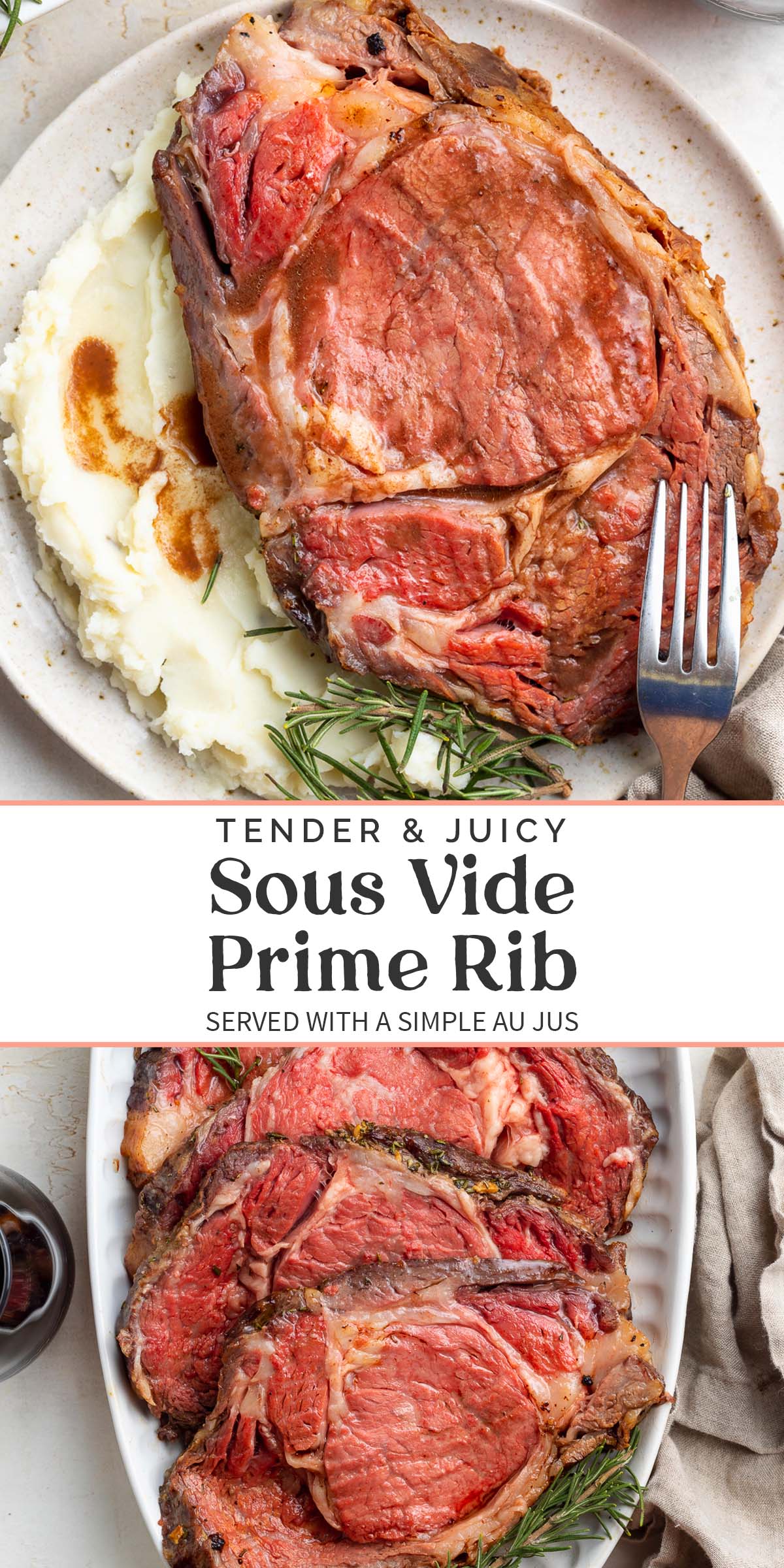
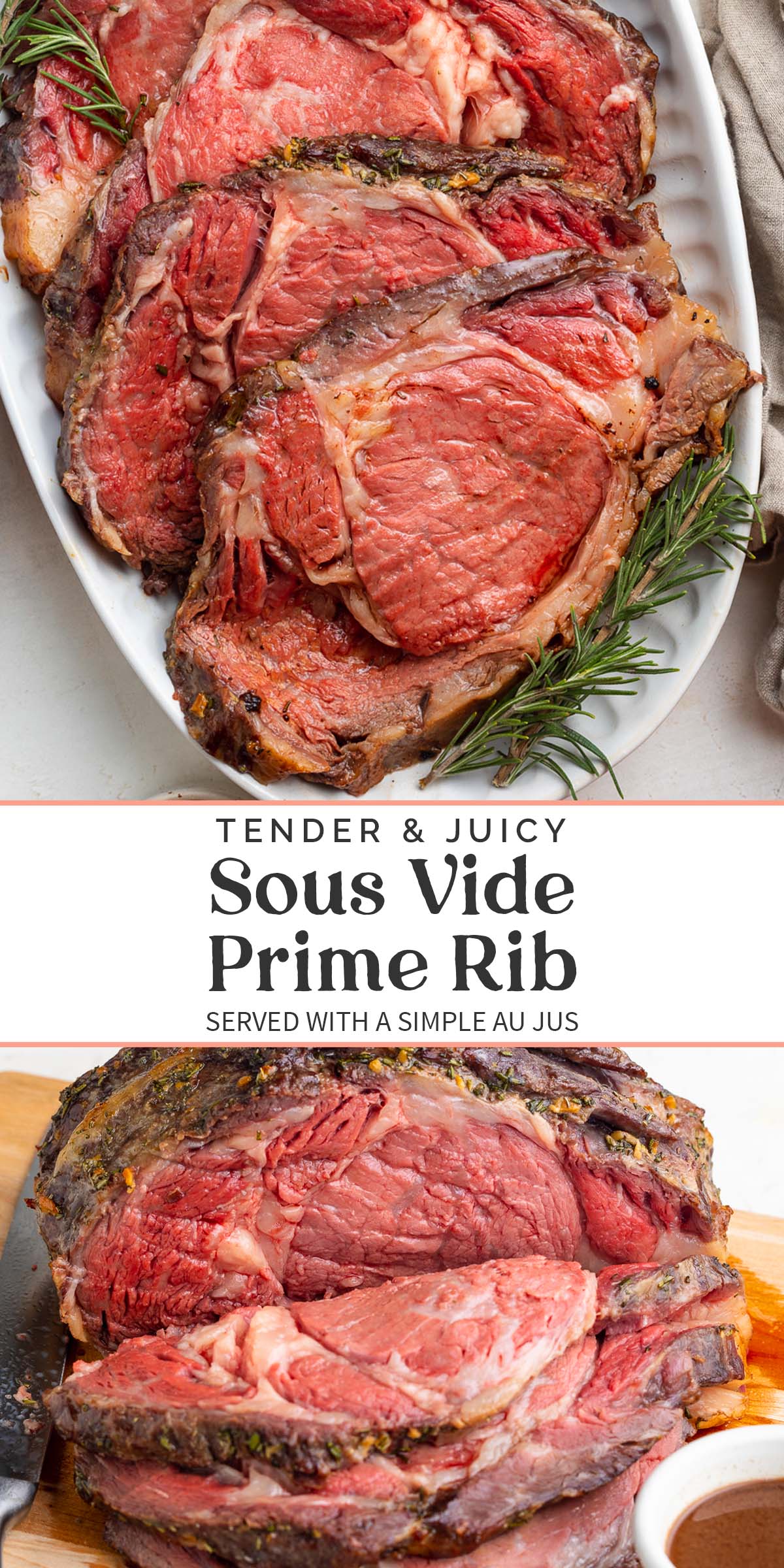

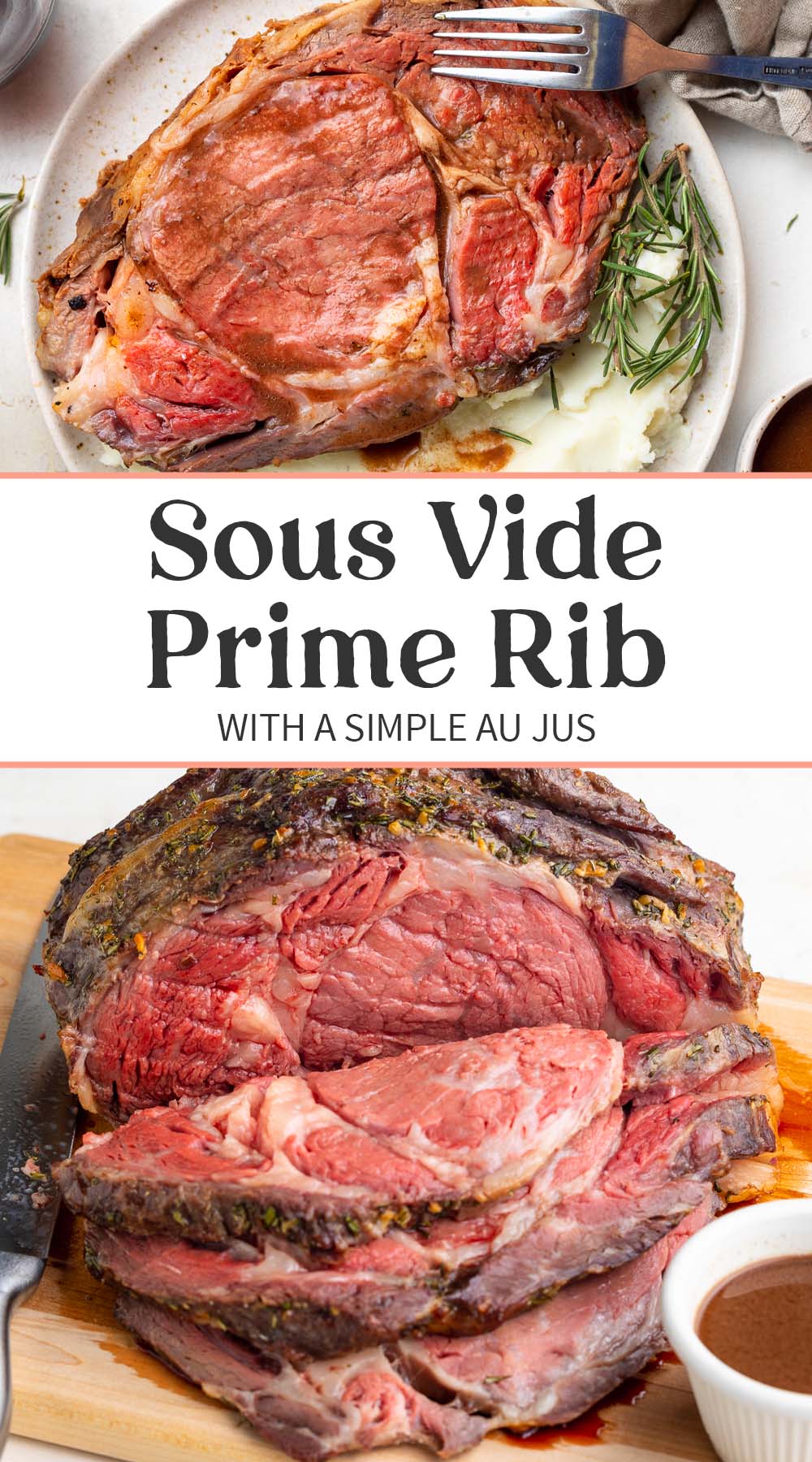
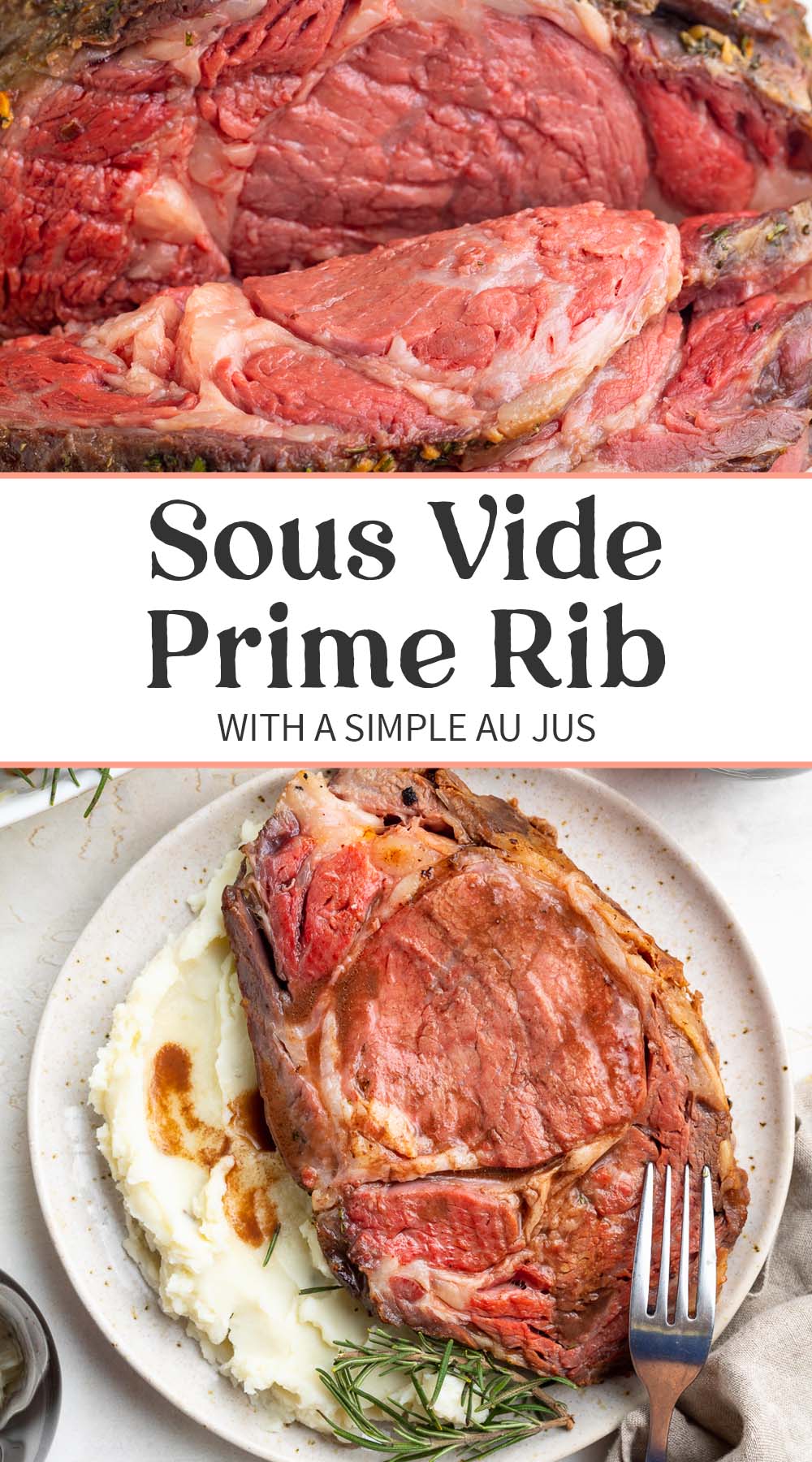
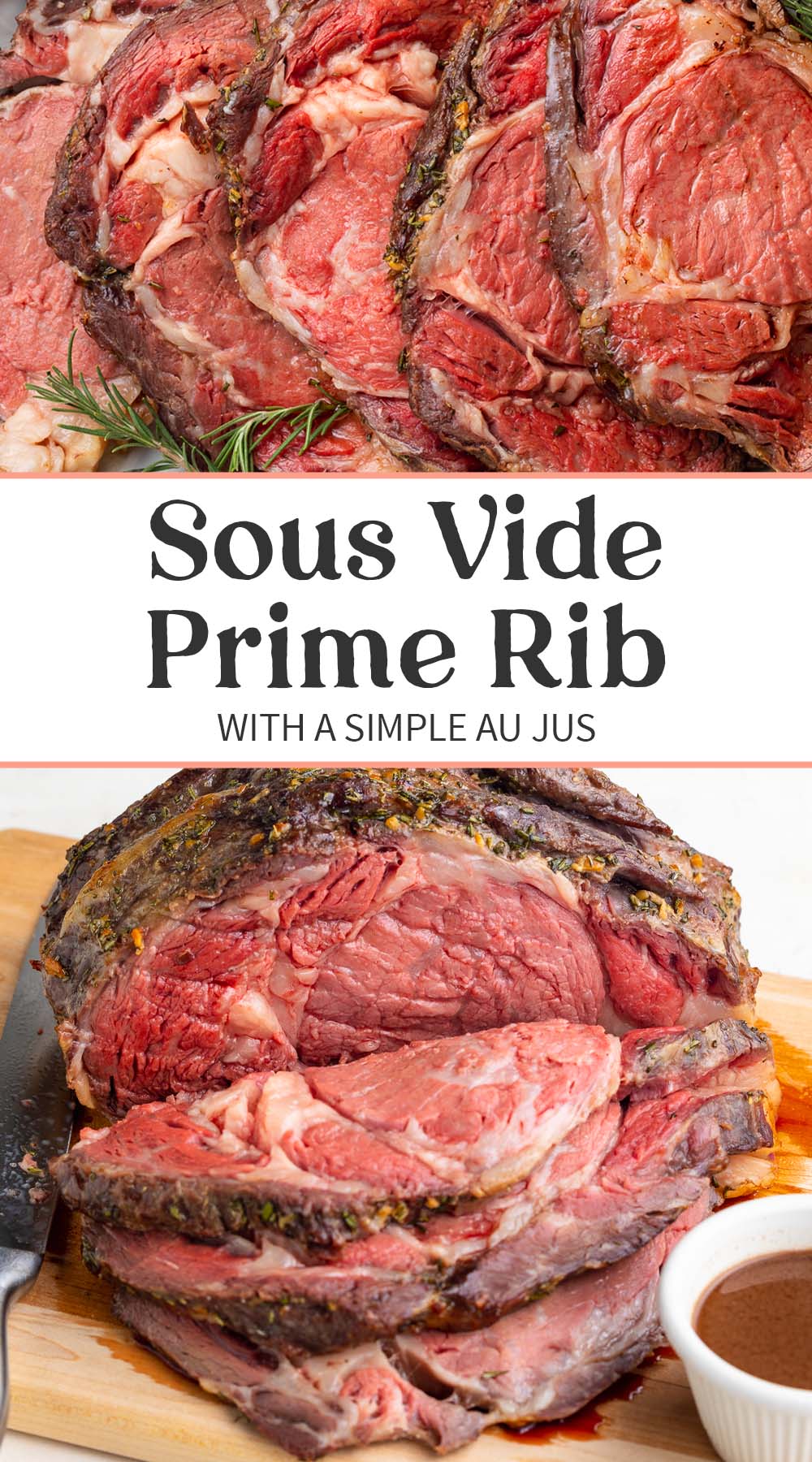
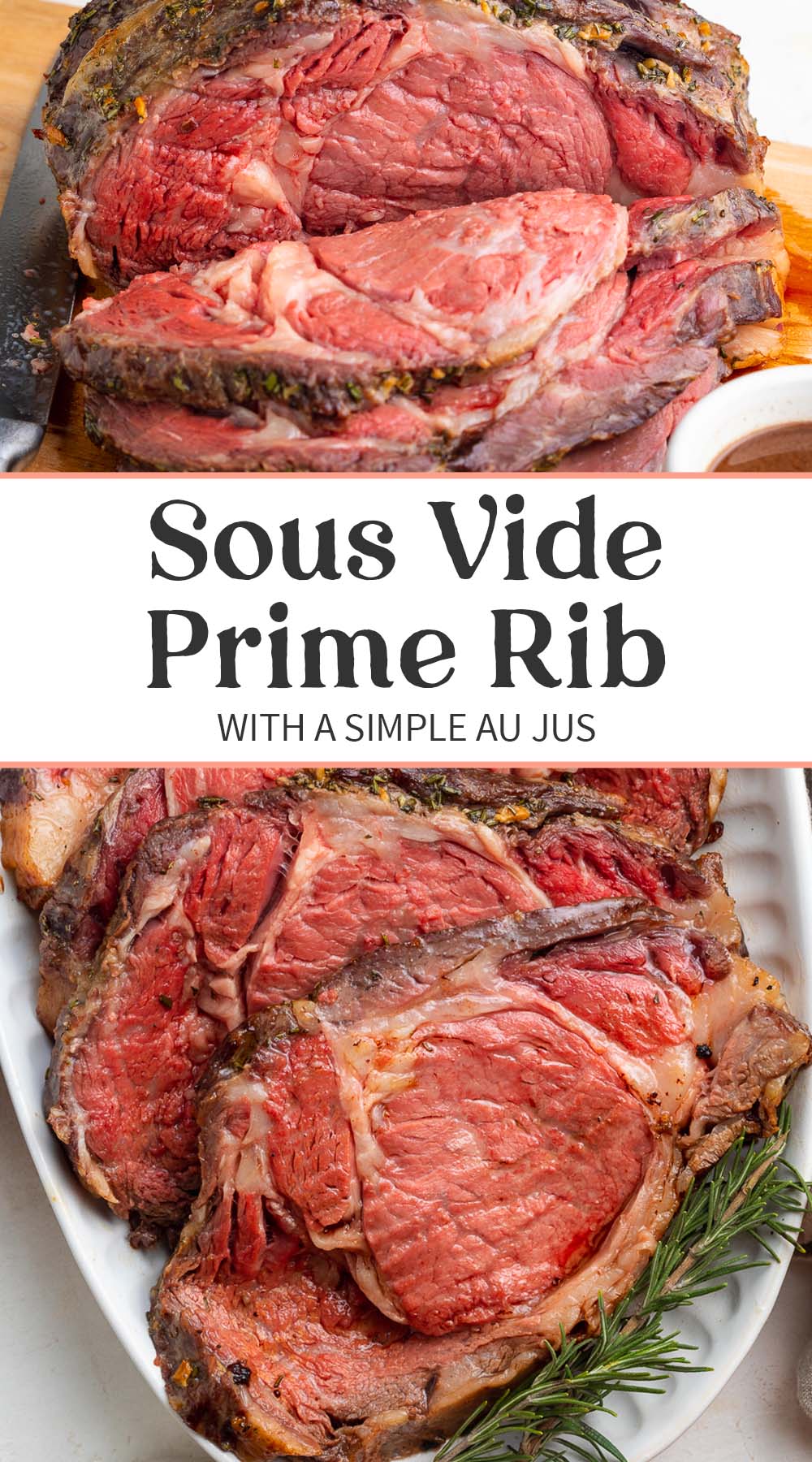
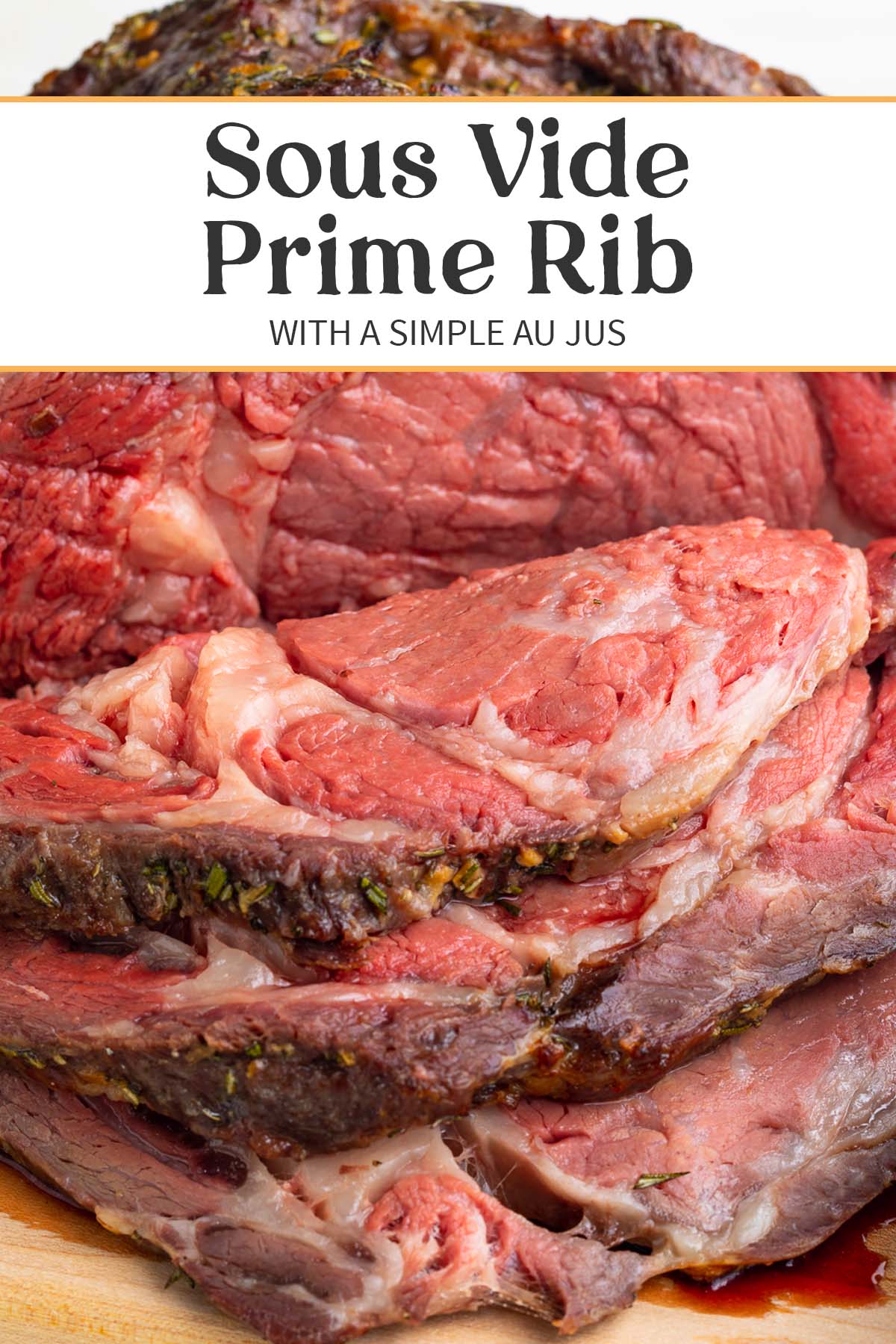
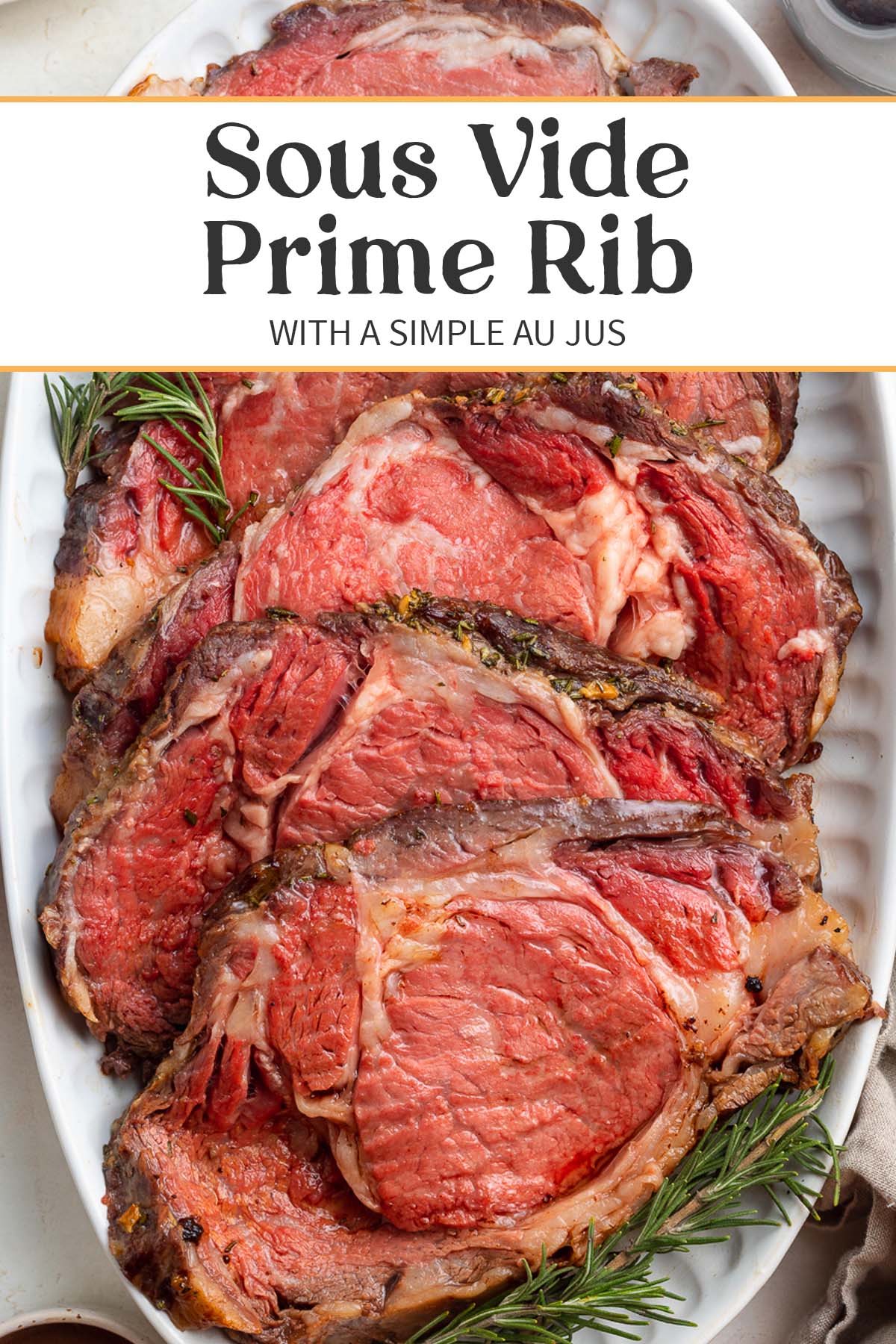
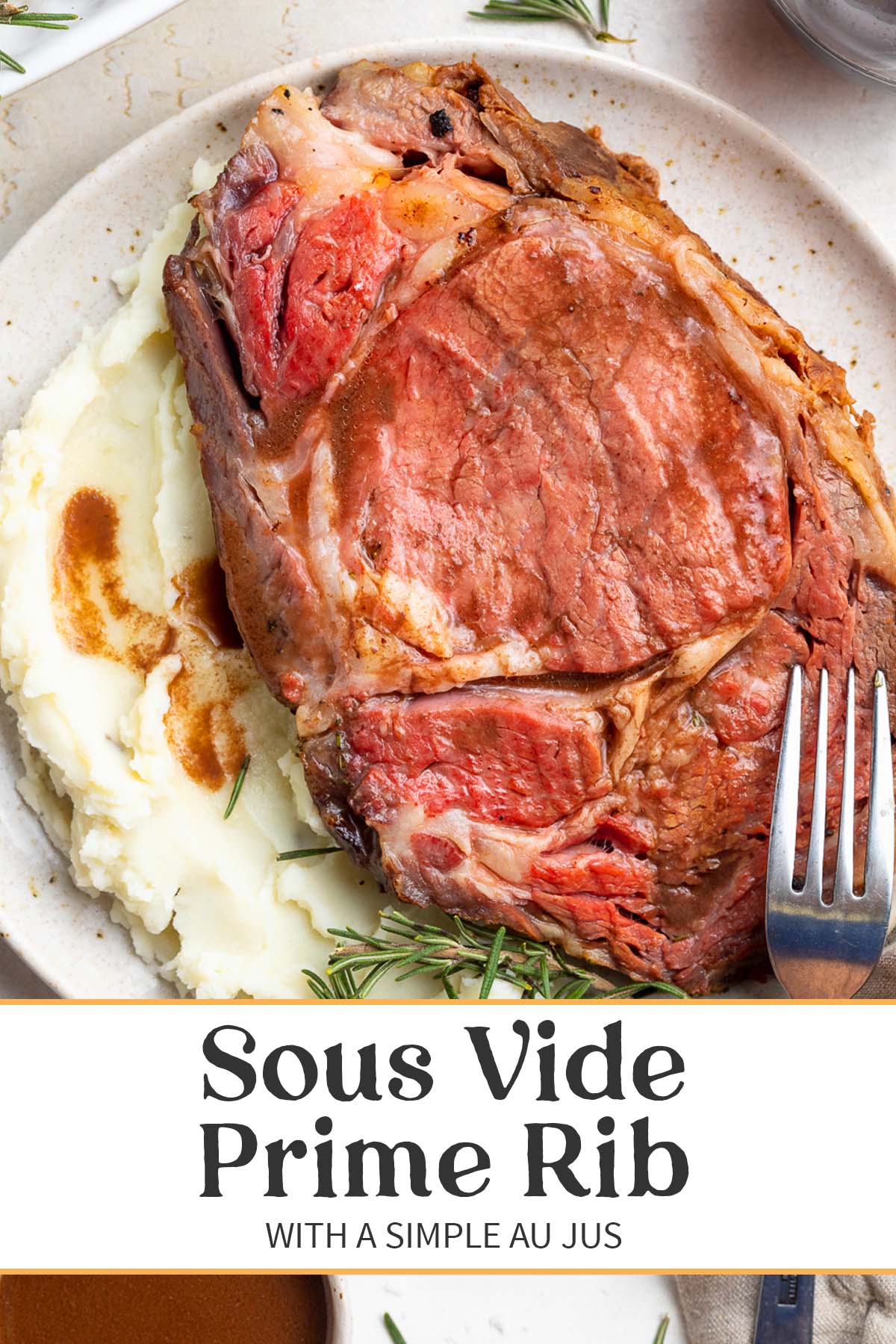


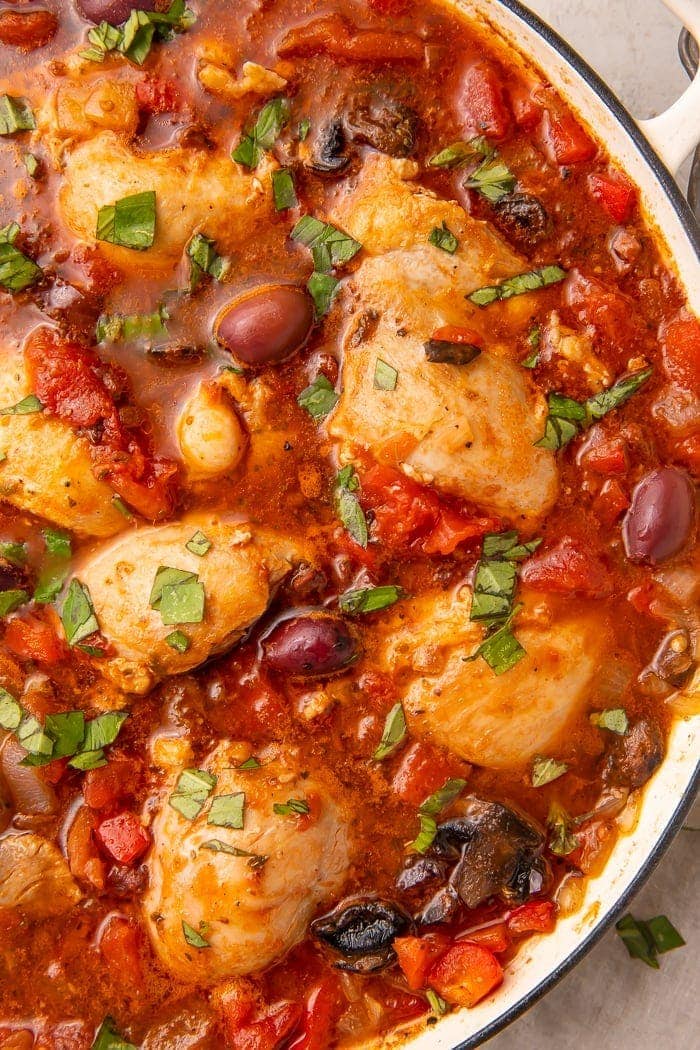
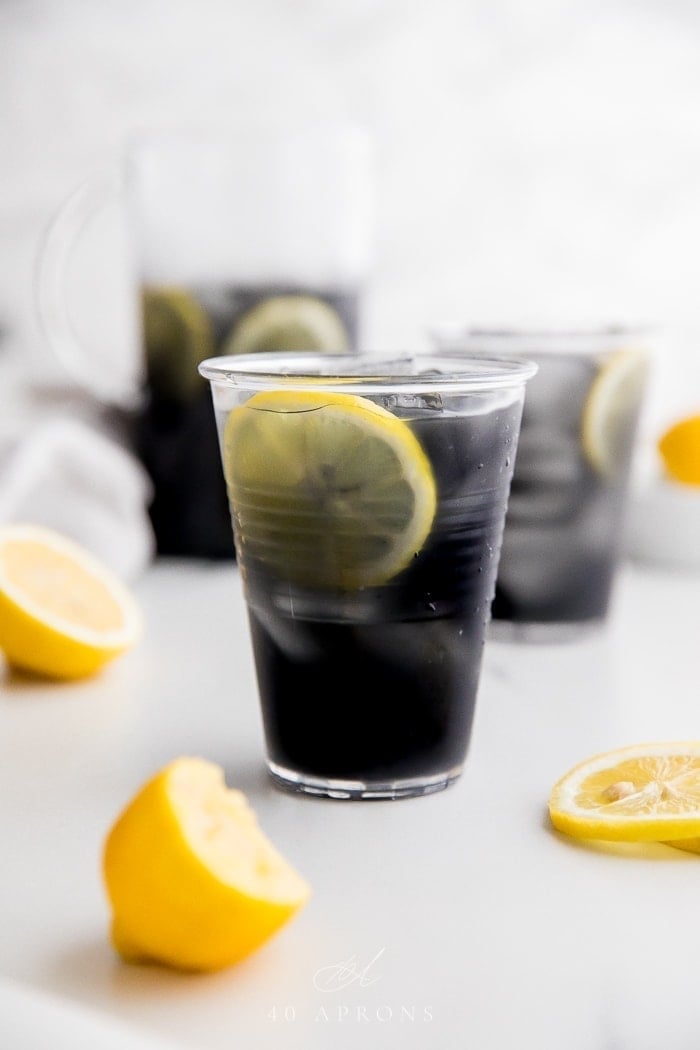
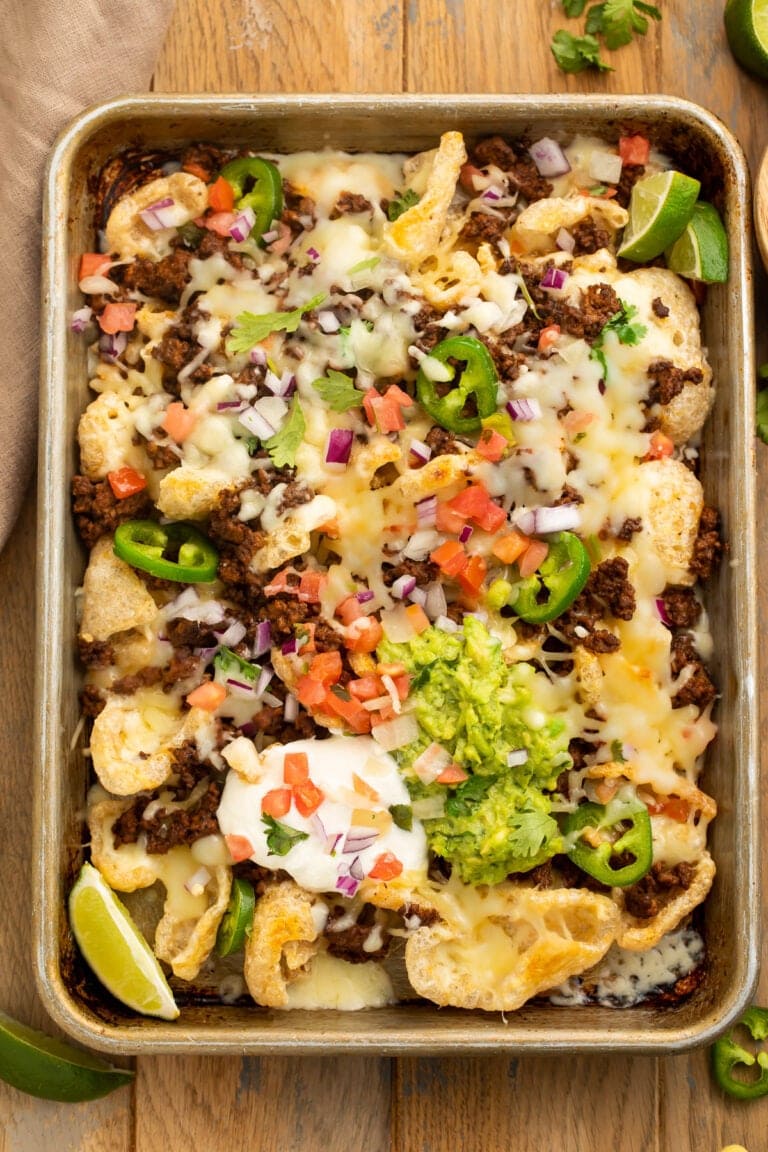
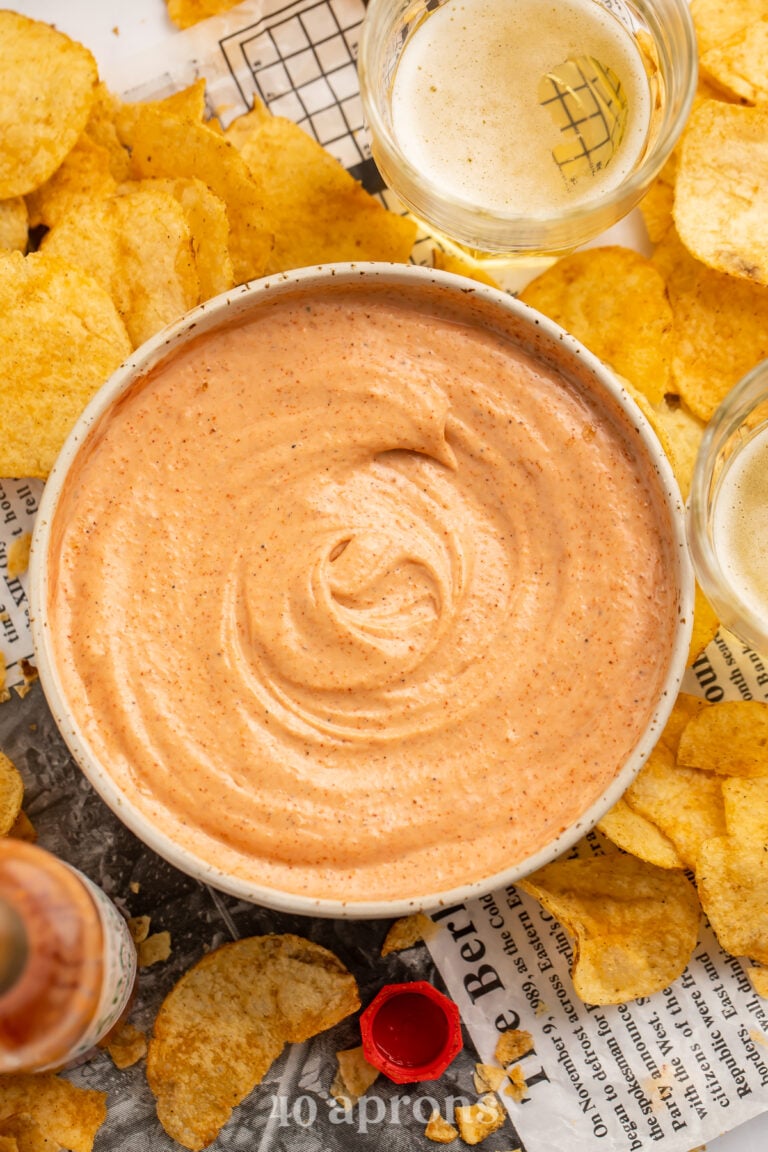











Never Miss A Meal!
New Recipes Straight To Your Inbox
A curated selection of our most recent recipes, delivered straight to your inbox once a week.
Thank you!
You have successfully joined our subscriber list.